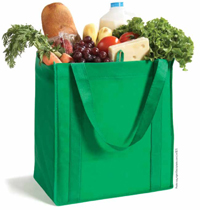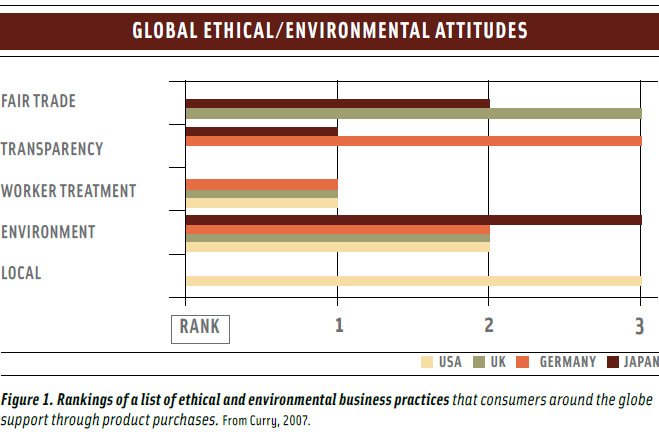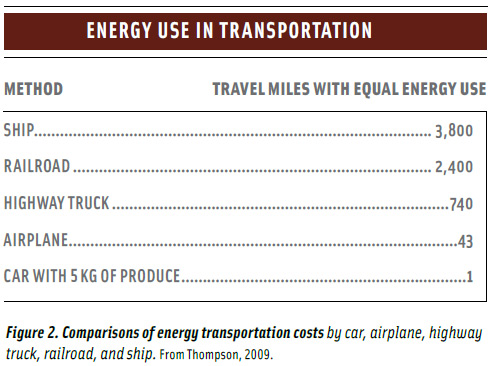Understanding ‘Green’ Consumers
Consumers want foods that are sustainable but are unsure of its meaning. This uncertainty presents an opportunity to develop a science-based approach to sustainable food production.
Sustainably produced, “green” products have captured the attention of an increasing number of shoppers. While consumers are not sure exactly how sustainability is measured or determined, they embrace the concept of caring for the environment and preparing for future generations.
 A December 2008 online survey by Strategy One found three-quarters (75%) of adults surveyed agree that eating green or sustainable foods will help me lead a life that is good for my body and the environment. A majority of consumers say they purchase more sustainably produced food now than they did a year ago (Borra, 2009). Forty-five percent reported that they continue to buy green products and services today, even when faced with higher costs and an economic downturn.
A December 2008 online survey by Strategy One found three-quarters (75%) of adults surveyed agree that eating green or sustainable foods will help me lead a life that is good for my body and the environment. A majority of consumers say they purchase more sustainably produced food now than they did a year ago (Borra, 2009). Forty-five percent reported that they continue to buy green products and services today, even when faced with higher costs and an economic downturn.
The typical green shopper in the United States tends to have higher income and more formal education than average. However, interest in green and sustainable is demographically diverse, spread across income ranges, age categories, educational levels, and household size (Bearse et al., 2009). Sustainable issues drive or influence more than half of the consumers interviewed for a GMA-commissioned study. While a minority of consumers are willing to pay more for sustainable products, most want price and performance parity for sustainable products because this characteristic is not the dominate factor that drives purchase. When other factors are comparable, consumers may select the item viewed as more sustainable. If a sustainable product meets expectations, it is likely to be purchased again, building brand loyalty.

Green is a Gray Area
For American consumers, the concept of green is not clearly defined. The Hartman Group found that the term sustainable is nebulous. The concept includes purchase of locally grown products, support of practices with a small carbon footprint, organic production, use of minimal packaging, and overall corporate responsibility (Demeritt, 2008). The concept of green is not limited to environmental responsibility, but also encompasses human ethics and social responsibility. Businesses are expected to treat their employees well in terms of safety and fairness. People say they will support these values with their pocketbook. Nearly two-thirds (65%) of consumers would purchase products from companies that maintain safe working conditions for employees, 62% from companies that strive to reduce and minimize waste and pollution, 51% from companies that offer good wages and benefits to employees, and 50% from companies that strive to reduce and minimize the environmental impact of production. In contrast, 40% of U.S. consumers report that they have stopped buying from companies they believe acted unethically (Curry, 2007).
Product packaging is one component of environmental responsiveness consumers believe they can assess easily. People believe that packaging has a major impact on the environment. Generation X and mature consumers are most likely to say they evaluate packaging and choose products based upon environmental friendliness. Younger consumer segments view the environment as important, but are more likely to be influenced by price than environmental impact (Raymond, 2009). Despite interest in packaging, consumers are unaware of the sustainability nuances of the various types of packaging material. They view “hard packaging” and over-packaging as environmentally destructive. On the other hand, consumers respond positively to companies that use packaging that is recyclable.
--- PAGE BREAK ---
While many Americans recognize the importance of green and sustainable food products, they appear to be unaware of where to find information to guide their purchases. Only about half have spoken to a family, friend, or health professional about green or sustainable food issues (Borra, 2009). Further, only about half have used an online source such as a media, government, or food company Web site to gather information about sustainability.
Interest in green and sustainable is not limited to the United States (See Figure 1). When consumers around the globe were asked to rank a list of ethical and environmental business practices that they support through product purchases, survey respondents from the U.S., UK, and Germany selected actively treat workers well as their top ranking. Actively improve the environment was ranked second by consumers in the U.S., UK, and Germany, and third in Japan. Transparency was ranked No. 1 by Japanese consumers and No. 3 by German consumers, and fair trade was ranked No. 2 by Japanese consumers and No. 3 by UK consumers (Curry, 2007).
In a recent article in the American Dietetics Assoc. newsletter ADA Times, nutritionist Jackie Newgent states, “Eating healthier and eating greener are not two separate approaches to eating, but rather approaches that go hand-in-hand” (Geagan, 2009). The author contends that Americans have a big carbon footprint because we rely heavily on processed and packaged foods, which take basic food and add many more steps (e.g., processing, refining, packaging, transportation, storage) which require fossil fuels. The author states that the Environmental Protection Agency estimates that 30% of landfill content is packaging waste, much of which comes from food.
Green shopping can appeal to a broad market segment, not just hard-core environmentalists. Many shoppers are open to the concept of green and environmental responsiveness, and many look for green products when shopping. In their 2009 survey, GMA/Deloitte found that there is an unfulfilled latent demand for green products that could be realized through increased product development and communication (Bearse et al., 2009). Consumers don’t know how to identify sustainable products but respond to in-store communication and information.
Lack of Data and Science
Claims of sustainability, however, may lack a scientific basis. A Wall Street Journal article points to the need for government oversight on green claims (Bounds, 2009). Opinion Research found about 33% of consumers don’t know how to tell if green claims are true (Anonymous, 2009), while the Hartman Group (2009) found that 75% of consumers do not know which products or companies are truly sustainable.
Lacking clear definitions, consumers make assumptions as to what products and production methods are green. Although the dominate reason for selecting organic foods appears to be concern about pesticide residue in conventional products, 63% of consumers believe organic production is environmentally friendly and 28% say they buy organic to protect the environment (Hartman Group, 2008). This perception may not consider the entire impact of production. For example, transportation expenses of manure is 15 times greater than transportation of more concentrated urea nitrogen and total product yield of organic farming may be less than conventional production if weeds are not controlled (Thompson, 2009).
In short, without data examining energy input, product output, and environmental impact, it is unwarranted to conclude that organic production is always greener or more sustainable than alternatives such as conventional production or use of integrated pest management. Further, organic production prohibits use of novel agricultural methods such as biotechnology or genetic modifications, approaches documented to use less pesticides and herbicides, produce higher yield, and be suitable for low or no-till farming (Council for Agricultural Science and Technology, 2002; Lemaux, 2009). Indeed, the data would support use of sustainable or green claims for genetically modified products, yet none have appeared in the marketplace.

Consumers also perceive that purchasing local is a green or sustainable practice (Hartman Group, 2008). About one-third (35%) of consumers report that they buy local because of the high environmental impact of transportation (Food Marketing Institute, 2009). Comparisons of transportation energy cost, however, indicate that transportation by personal truck has a significantly higher per ton energy cost than transportation by highway truck, railroad, or ship (Thompson, 2009). One mile by personal car is equivalent to 740 miles by highway truck, 2,400 miles by railroad, and 3,800 miles by ship (See Figure 2). Since local may mean anywhere from within 50 miles or within the state, local transportation costs could be substantial. If the local climate requires higher costs in production, such as use of a greenhouse, a locally grown product could be more costly from an energy perspective than a product transported efficiently from another location.
--- PAGE BREAK ---
Establishing Sustainability Standards
Some popular writers as well as some widely recognized health professionals have criticized the food industry for its failure to fully embrace health and environmental responsibility. The Strategic Alliance for Healthy Food and Activity Environments—a California-based coalition of nutrition and physical activity advocates—has launched an initiative called “Setting the Record Straight: Nutritionists Define Healthful Food (Sim, 2009). Professionals are urged to endorse a definition stating that healthful food “comes from a food system where food is produced, processed, transported, and marketed in ways that are environmentally sound, sustainable, and just.” This group defines healthful food as minimally processed, and without artificial colors, flavors, or unnecessary preservatives. Workers and natural resources should not be exploited, and animals should not be treated cruelly. Further, the industry is asked to “stop using deceptive health claims and green marketing to blur the lines between wholesome food and highly processed food products.” Clearly, the food industry faces a communications challenge, not just with the public, but with individuals having professional credentials.
Groups are organizing to address the complex questions of sustainability and green production. The Stewardship Index for Specialty Crops project, for example, is a multi-stakeholder initiative to develop a system for measuring sustainable performance throughout the specialty crop supply chain. The group developing this index consists of nine environmental and public interest groups, nine grower, supplier, and trade organizations, 11 buyer and trade associations, and one university expert (Stewardship Index for Specialty Crops, 2009). Research-based or scientific data should be used to establish this index, but a quick review of the group’s Web site suggests that the research-based organizations such as university collaborators could be strengthened. The Council for Agricultural Science and Technology (CAST) is preparing a research-based publication on the sustainability of U.S. soybean production that will compare conventional, transgenic, and organic production systems. The Food Marketing Association will host a 2.5-day Sustainability Summit in San Francisco in mid-August.
The Institute of Food Technologists could play a leading role in defining the parameters of sustainability, and developing a science-based approach to measure and communicate sustainable practices. Components of sustainable practices may include energy use in production, processing, and transportation, indicators of carbon emission, and use of renewable resources.
Consumer communication may be facilitated through the use of an icon that represents different dimensions of sustainability. For example, a clover with three leaves could symbolize production, processing, and transportation sustainability. Different levels of sustainability could be indicated by light, medium, or dark green leaves. The icon should provide sufficient flexibility to be useable by the food processing, retail, and foodservice industries. Consumer research should develop and refine the communications program, which can be monitored and modified as needed.
The food industry can respond to environmentally conscious consumers by leading in the development and communication of the concept of environmental sustainability. Criteria based on sound science can advance societal goals while allowing the food industry to respond to consumer demand.
The industry also needs to take a more active and public role in communicating social responsibility. This can include good corporate citizen initiatives such as support for local and national youth or community projects appropriate for brand and corporate identity. Marketing and communication plans should be integrated to highlight socially responsible actions while supporting and defining brand identity.
We have an opportunity to set the standards for environmental and social responsibility and develop the means to communicate these standards to the public. While an effective program can advance a brand, an industry-wide, science-based initiative can advance the entire food industry.
Christine M. Bruhn, Ph.D. ([email protected]), a Professional Member and Fellow of IFT, is Director, Center for Consumer Research, Dept. of Food Science and Technology, University of California, Davis, One Shields Ave., Davis, CA 95616.
References
Anonymous. 2009. Consumers still buying green despite economic downturn, says study. Packaging Dig. Feb. 6.
Bearse, S., Capozucca, P., Favret, L., and Lynch, B. 2009. Finding the green in today’s shoppers. Sustainability trends and new shopper insights. GMA/Deloitte Green Shopper Study.
Borra, S. 2009. The convergence of health and wellness and the environment: Drivers behind consumer choice. Presented at IFT Annual Meeting & Food Expo. Anaheim, CA. June 7.
Bounds, G. 2009. As eco-seals proliferate, so do doubts. Wall Street Journal. Available at http:online.wsj.com/article/SB123862823846680371.html?mod=dist_Smartbrief. April 2.
Council for Agricultural Science and Technology. 2002. Comparative environmental impacts of biotechnology-derived and traditional soybeans, corn, and cotton crops. Available at http://www.talksoy.com/ComparativeStudy/default.htm.
Curry, A. 2007. Consumer responses to environmental and ethical issues. Durrell Wildlife Conservation Trust. Henley Centre HeadlightVision.
Demeritt, L. 2008. The new greening of the food industry, Sustainability from a consumer perspective. Presented at IFT Annual Meeting & Food Expo, New Orleans, LA. July 1.
Food Marketing Institute. 2009. Grocery Shopper Trends 2009.
Geagan, K. 2009. Why RDs are perfectly poised for going green. ADA Times. Spring, 22.
Hartman Group. 2008. Organic 2008: Topline insights.
Hartman Group. 2009. Sustainability: The rise of consumer responsibility.
Lemaux, P.G. 2009. Genetically engineered plants and foods: A scientist’s analysis of the issues. Annual Rev. Plant Biol. 60: 511-539.
Raymond, E. 2009. Survey reveals generation gaps on sustainability attitudes. Packaging Dig. 46: 4.
Sim, J. 2009. Setting the record straight: Nutritionists define healthful food. Available at www.preventioninstitute.org/sa/settingtherecordstraight.html.
Stewardship Index for Specialty Crops. 2009. Available at www.stewardshipindex.org.
Thompson, J. 2009. Energy use in transportation: University of California, Davis.
